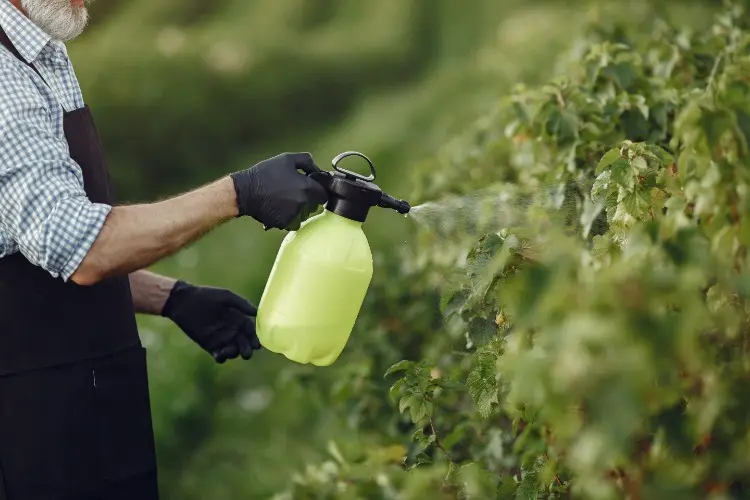Is Hypochlorous Acid Safe for Plants? The Truth About HOCl in Gardening
Gardeners are always on the lookout for safe and effective ways to protect their plants. One substance gaining attention in plant care is hypochlorous acid (HOCl). It is known for its strong antimicrobial properties and is used in food safety, water treatment, and medical sanitation. But is hypochlorous acid safe for plants? Let’s dive deep into the science, benefits, and best practices of using HOCl in gardening.

Understanding Hypochlorous Acid (HOCl)
What Is HOCl?
Hypochlorous acid (HOCl) is a naturally occurring compound composed of hydrogen, oxygen, and chlorine. It is produced by the human immune system to combat pathogens. Unlike harsh chemicals such as chlorine bleach or sodium hypochlorite, HOCl is much milder and has a near-neutral pH, making it safer for various applications, including plant care.
How Is HOCl Made?
HOCl is produced by electrolyzing a solution of table salt (sodium chloride) and water. This process, known as electrolysis, separates sodium and chloride ions, resulting in hypochlorous acid and a small amount of free chlorine.
To make HOCl at home or in commercial settings, a hypochlorous acid maker machine is used. This machine ensures a safe and controlled production process, eliminating the need for harmful chemical storage.
Comparing HOCl with Traditional Chlorine Solutions
Many plant disinfectants contain chlorine-based compounds, but not all chlorine solutions are plant-friendly.
FeatureHypochlorous Acid (HOCl)Sodium Hypochlorite (Bleach)pH LevelNear Neutral (~5.5-6.5)Highly Alkaline (~11-13)ToxicityLowHighResidueMinimalLeaves harmful residuePlant SafetySafe in proper dilutionCan burn leaves and rootsEnvironmental ImpactBiodegradableCan be hazardousUnlike sodium hypochlorite or chlorine bleach, which can damage plants due to their high pH and toxicity, HOCl is a gentler alternative that kills microbial pathogens without harming plant tissue.
How HOCl Benefits Plants
Now that we know HOCl is different from traditional chlorine disinfectants, let’s explore how it benefits plants.
1. Fights Fungal and Bacterial Diseases
Plants often suffer from fungal infections, such as powdery mildew, downy mildew, and root rot. HOCl acts as an effective antifungal agent, killing harmful spores without disrupting plant health. It can also prevent bacterial diseases like bacterial leaf spot and fire blight.
How to Use HOCl for Disease Prevention
· Foliar Spray: Dilute HOCl (50-100 ppm) and spray it on leaves to prevent fungal infections.
· Soil Treatment: Adding HOCl to irrigation water at safe concentrations can kill pathogens in the soil.
2. Improves Hydroponic System Health
Hydroponic growers face the challenge of keeping their nutrient solution clean. Bacteria, algae, and fungi thrive in water-based systems, leading to clogged pipes, root disease, and reduced oxygen availability.
HOCl in Hydroponic Systems
· Disinfects water without harming plant roots.
· Prevents biofilm buildup in pipes and reservoirs.
· Reduces harmful bacteria and viruses in the nutrient solution.
A study showed that low concentrations of HOCl (10-30 ppm) effectively reduced microbial growth in hydroponic lettuce without damaging plant roots.
3. Protects Seeds from Pathogens
Seeds often carry microbial pathogens that can affect germination and early growth. HOCl can be used as a seed disinfectant to improve germination rates.
How to Treat Seeds with HOCl
· Soak seeds in 50-100 ppm HOCl for 5-10 minutes.
· Rinse with clean water and dry before planting.
This method has been used in commercial agriculture to improve seed health and reduce disease risks.
4. Disinfects Gardening Tools and Surfaces
Gardening tools, pots, and greenhouses can harbor harmful microbes that spread diseases. HOCl can be used to sanitize tools and food contact surfaces without toxic residues.
How to Use HOCl for Surface Disinfection
· Spray tools and surfaces with 100-200 ppm HOCl.
· Let it sit for 1-2 minutes before wiping or air-drying.
· Use regularly to prevent cross-contamination.
5. Enhances Post-Harvest Storage
After harvesting, fruits and vegetables can decay due to bacterial and fungal contamination. HOCl helps preserve produce by reducing microbial load and extending shelf life.
How to Use HOCl for Post-Harvest Treatment
· Dip harvested produce in a 50-100 ppm HOCl solution for 1-2 minutes.
· Allow produce to air-dry before storage.
Studies have shown that HOCl-treated produce remains fresh longer compared to untreated produce.
Is There Any Risk to Plants?
While HOCl is generally safe, improper use can cause issues. Here are key considerations:
1. Overuse Can Cause Leaf Damage – High concentrations (>200 ppm) may burn plant leaves.
2. Sensitive Plants May React Differently – Test on a small area before widespread use.
3. Sunlight Exposure Reduces Effectiveness – Apply in the morning or evening.
4. pH Levels Must Be Monitored – Maintain a near-neutral pH (5.5-6.5) for best results.
How to Make HOCl at Home
Making HOCl at home is easy with a hypochlorous acid maker machine. Here’s what you need:
Ingredients:
· 1 liter of water (preferably distilled or filtered)
· 2 grams of table salt (sodium chloride)
· A hypochlorous acid generator
Steps:
1. Add water and salt to the machine.
2. Start the electrolysis process.
3. After a few minutes, the machine will produce fresh HOCl.
4. Store in a sealed, dark container to maintain effectiveness.
By generating hypochlorous acid at home, we ensure a fresh, safe, and cost-effective solution for gardening.
Final Thoughts: Is HOCl the Future of Gardening?
Hypochlorous acid is revolutionizing plant care. It fights diseases, keeps hydroponic systems clean, disinfects gardening tools, and extends the shelf life of harvested produce. Unlike chlorine bleach or sodium hypochlorite, it is gentle on plants and environmentally friendly.
For gardeners and commercial growers, HOCl is a game-changer. Whether used in hydroponics, soil irrigation, or post-harvest treatment, this powerful yet safe disinfectant is paving the way for healthier, more resilient plants.
